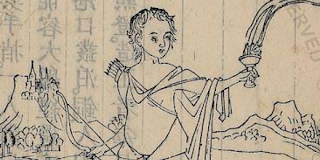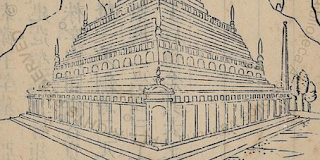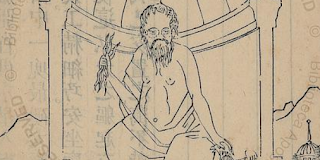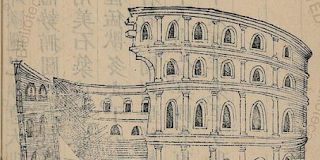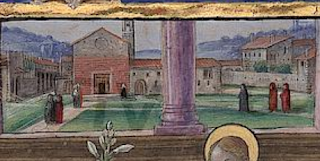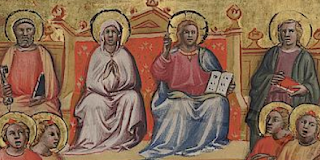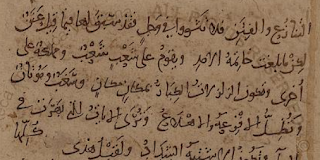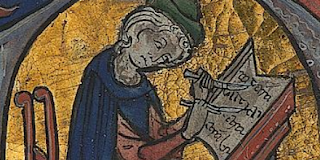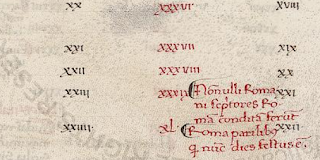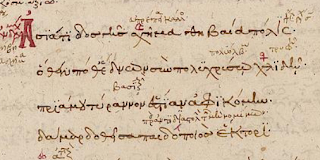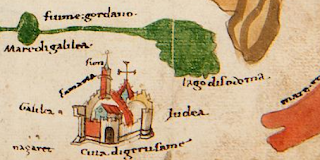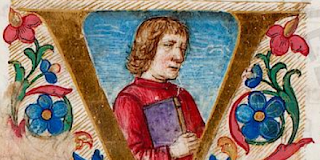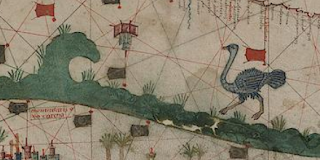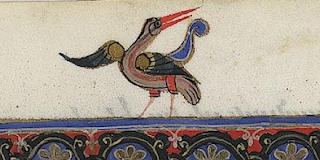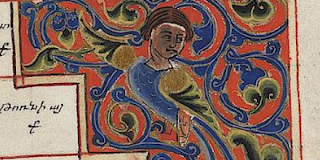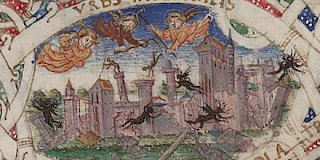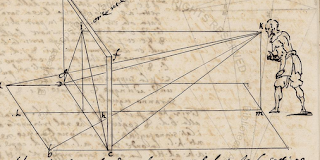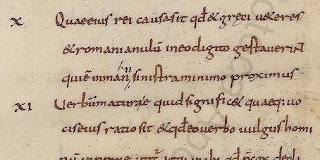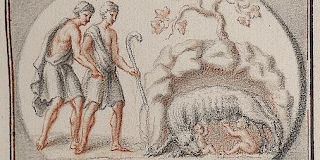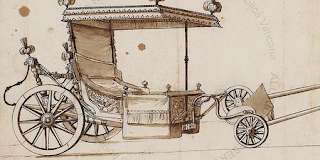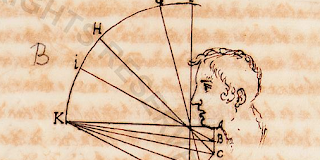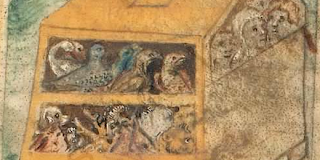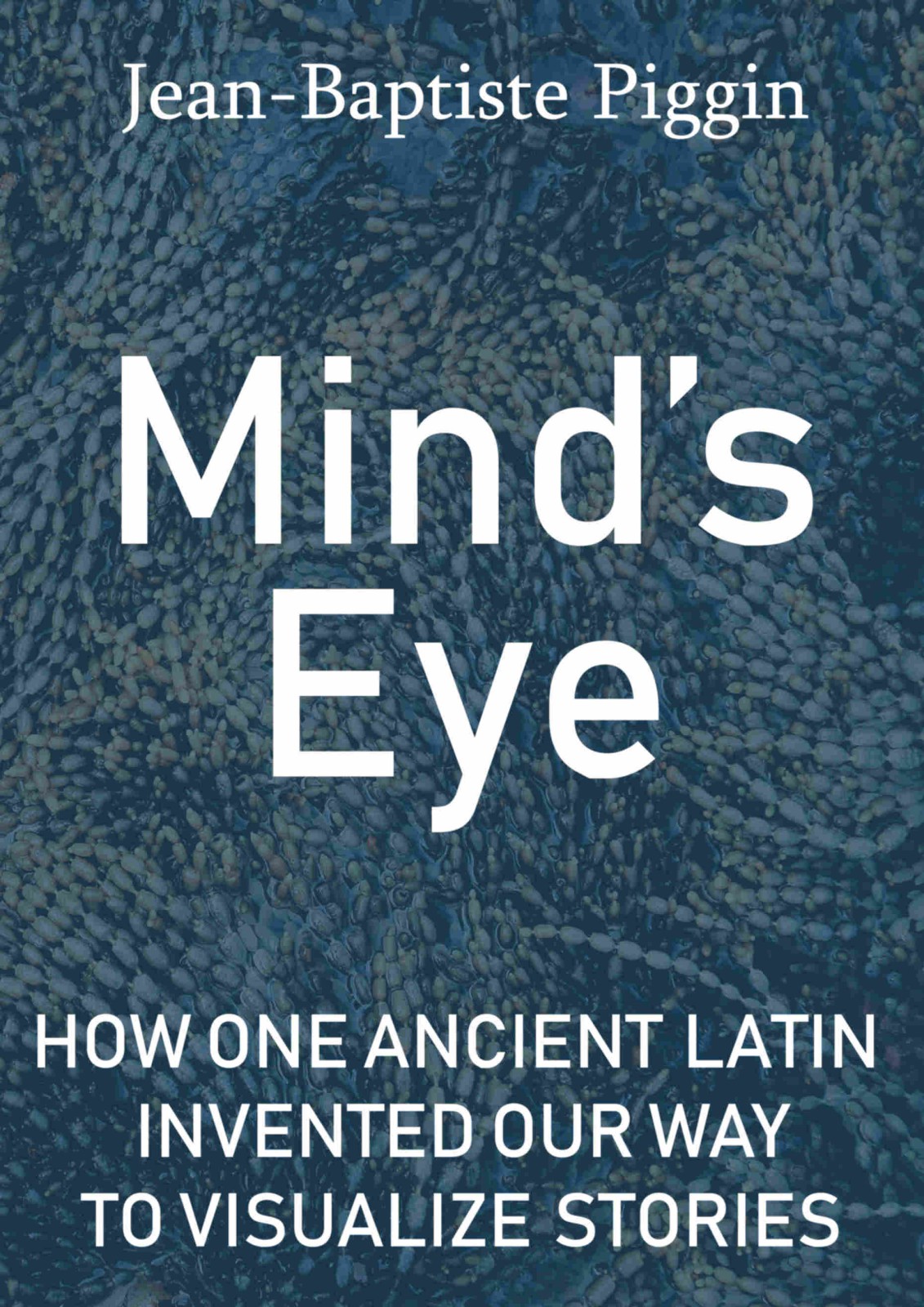Its especial charm resides in the unknown artist's conceptions of sea monsters and the Wonders of the Ancient World. To the fanciful western pictures of the wonders which he would have used as his model, he added his own perspective. Neither he nor we know what most of these monuments really looked like, so it is interesting to see how an Asian sensibility envisaged these fabled places.
Digita Vaticana has just digitized the book, which it stocks as Borg. cin. 350, fasc. 30. I have no idea how rare this printing was. The wood-block engraving is not of a very high quality, suggesting the book was priced for the mass market in China. Here are the seven wonders, to which an eighth was of course added in the time-honoured fashion at the discretion of the compiler.
The Hanging Gardens of Babylon are depicted as great blocks of inclined stone leaning alarmingly off a pine-clad mountainside over an architectural garden with a bridge as a walkway. Full page.
The Colossus of Rhodes, with a contemporary European merchant ship sailing between its knees, guards the entrance to its Mediterranean harbour and is shown with boylike, notably Asian facial features. Full page.
The Great Pyramid of Giza, which was the only one of the wonders to still exist in 1620, is greatly heightened and shown amid mountains. Full page.
The Mausoleum at Halicarnassus is visualized as a ziggurat. Full page.
The Temple of Artemis at Ephesus is depicted as a long hall in a style that is more Renaissance than classical. Full page.
The Statue of Zeus at Olympia is a round-shouldered senior clutching some rather limp looking thunderbolts. The artist may have puzzled over what on earth these were meant to be. With his left hand, Zeus pats his eagle. Full page.
The Lighthouse of Alexandria has a very smoky fire going on top. Full page.
The eighth wonder is the Roman Colosseum, for which the artist clearly had a fairly accurate model to draw from. Full page.
There are more details about this book in the catalog to the Rome Reborn exhibition held 20 years ago in the United States.
This is one of 19 items brought online on September 21, bringing the published Digita Vaticana tally to 2,744. Here is the full list:
- Barb.gr.350, 12th/13th century. Aristotle? Pinakes
- Barb.lat.610, missal of the Baptistery in Florence, an ornately decorated Renaissance prayerbook, illuminated by Monte in 1507. Here's a detail showing a Florentine garden:
- Barb.lat.671, in 8th-century uncial, a wide variety of patristic writings, comprehensively listed by Hill
- Barb.lat.3695, Anonymous, L'alta divina maiestate eterna
- Barb.lat.3974, Dante
- Barb.lat.4096, with a commentary on Dante's Divine Comedy
- Barb.lat.4112, illuminated Divine Comedy, detail below from 141r
- Borg.cin.350, multiple Chinese printed books, some by Aleni, bound into a single codex
- Borg.copt.109.cass.XIII.fasc.42, Gospel of Matthew, ch. 16-20
- Borg.copt.109.cass.XIII.fasc.43, Gospels of Matthew 18-19, 25-26 and Mark 2-9
- Cappon.269
- Cappon.281.pt.1,
- Cappon.283.pt.2,
- Urb.lat.26, Thomas Aquinas, catena aurea, Gospels of Mark and John, 15th century, ornate initials
- Urb.lat.35, John Chrysostom, Catalog
- Urb.lat.47, Athanasius and John Climacus, Catalog
- Urb.lat.50, Jerome on Jeremias, Catalog
- Urb.lat.53, Jerome on Isaiah, Catalog
- Urb.lat.65, Leo the Great, sermons and letters, Catalog
This rare and beautifully executed portrait of Matteo Ricci reveals how European and Chinese pictorial methods contrast. Chinese portraits developed out of centuries of brushed calligraphy and the subdued treatment of human figures, on one hand, and Buddhist and Taoist depictions of humans and divinities on the other.I wonder do wonder if the line drawing it is not drawn directly from the 1610 painting of Ricci by Yu Wen-hui (later Emmanuel Pereira) that has been in Rome since 1616.
Follow me on Twitter (@JBPiggin) for more news. Write comments in the box below if you can add details, or correct my notes. Thanks to @TuomasLevanen for filling in Coptic collection details! [This is Piggin's Unofficial List 25.]

